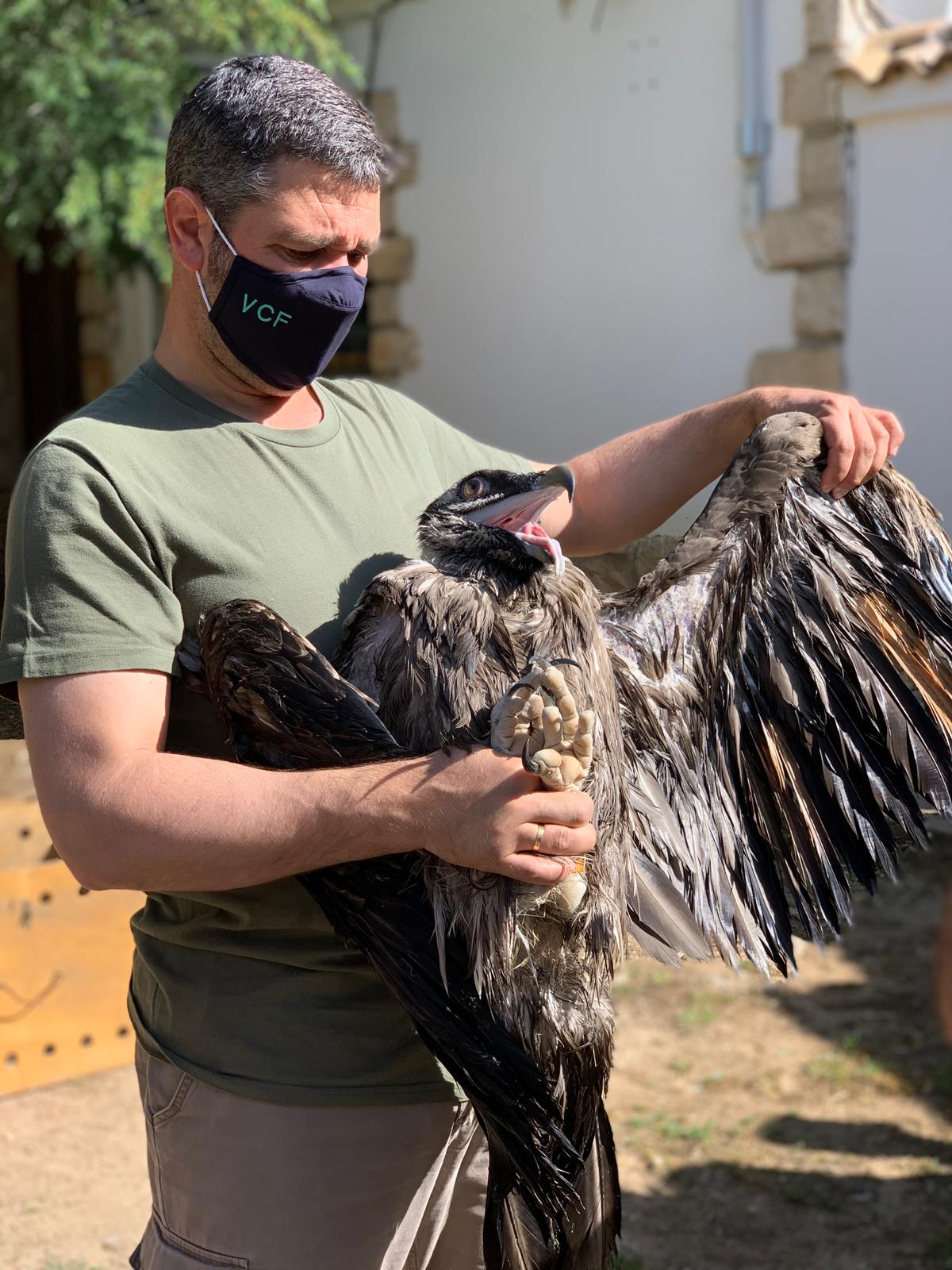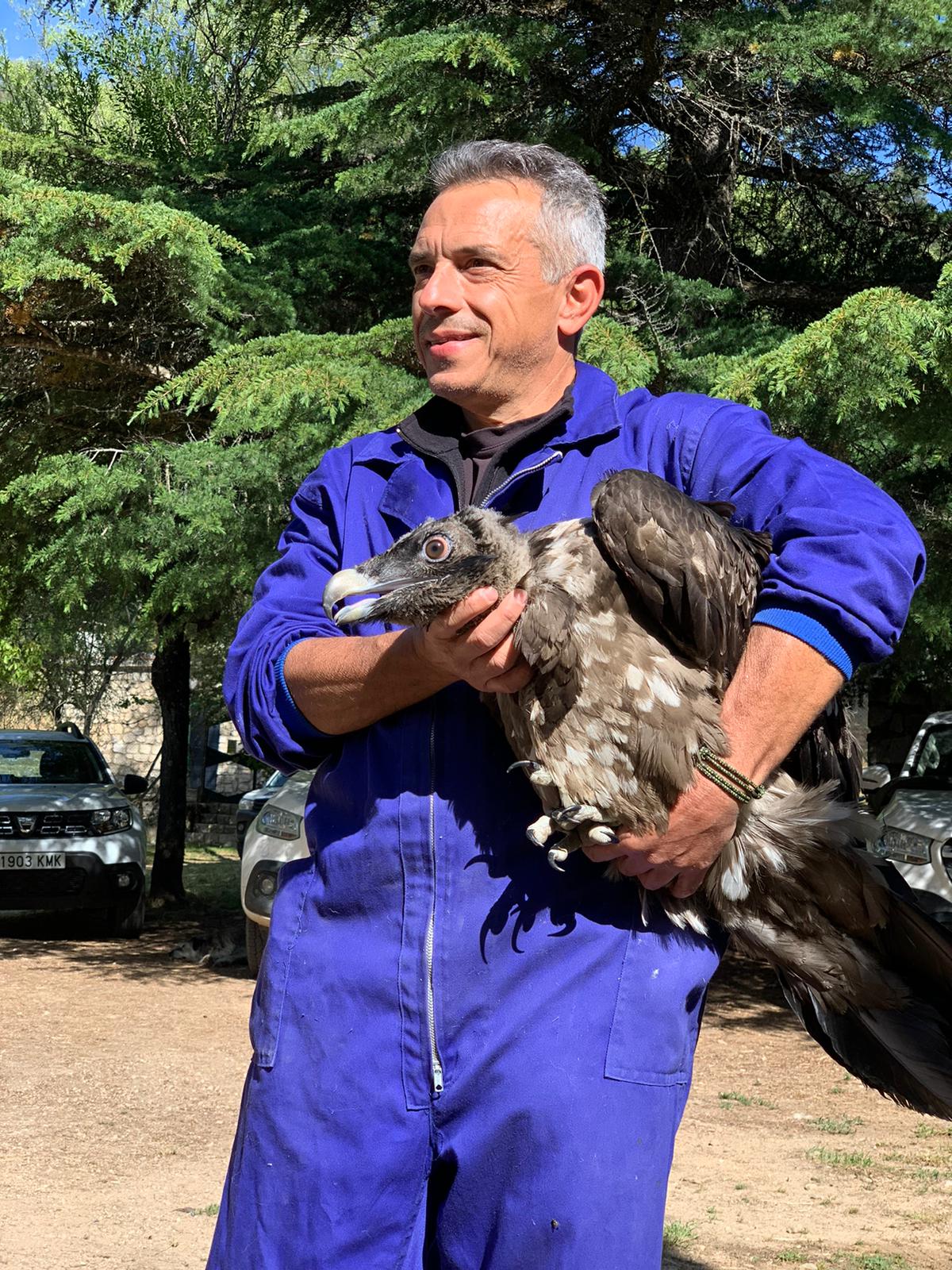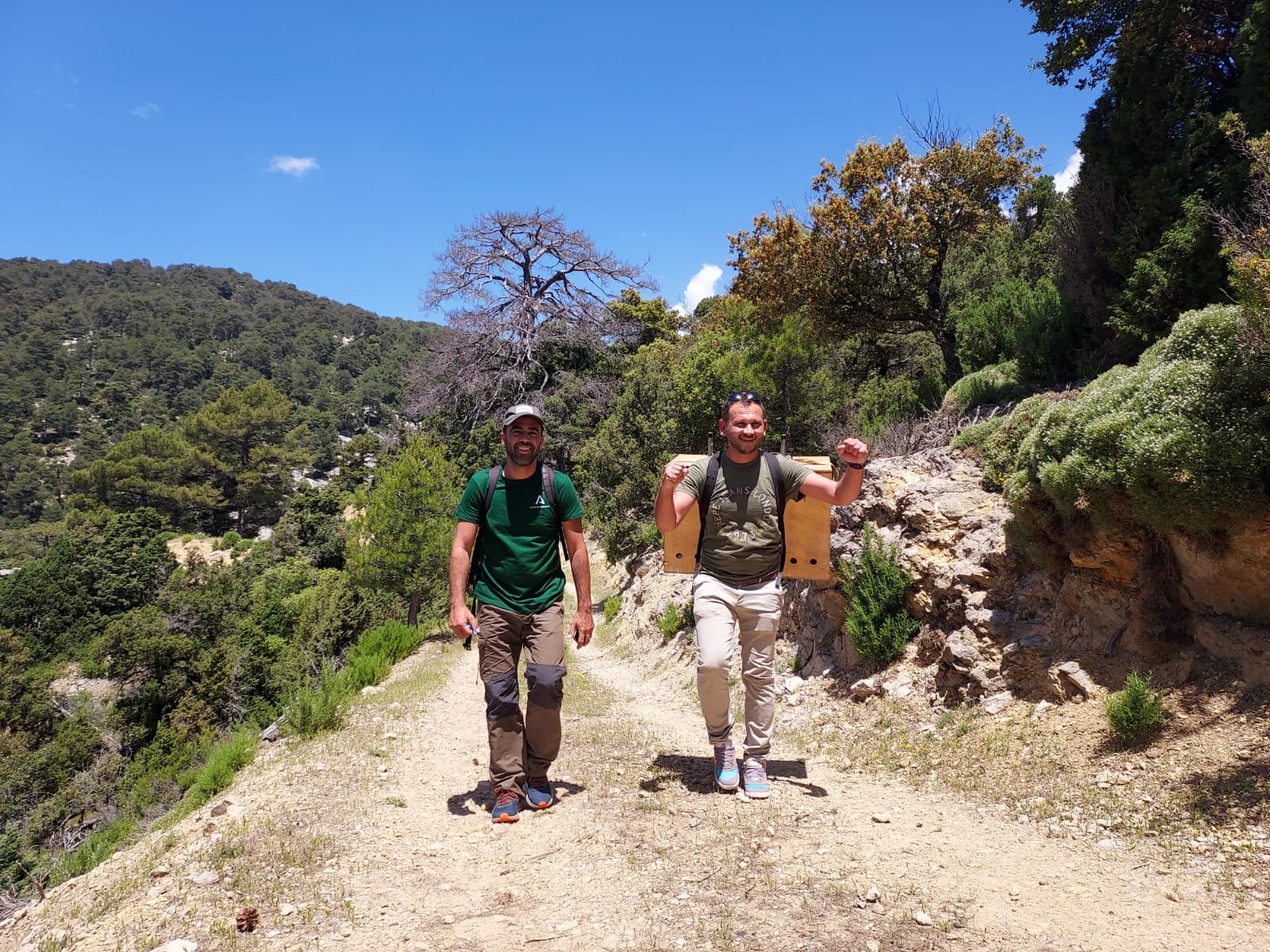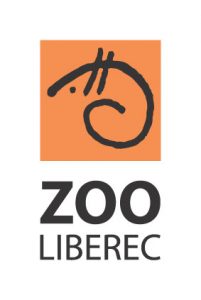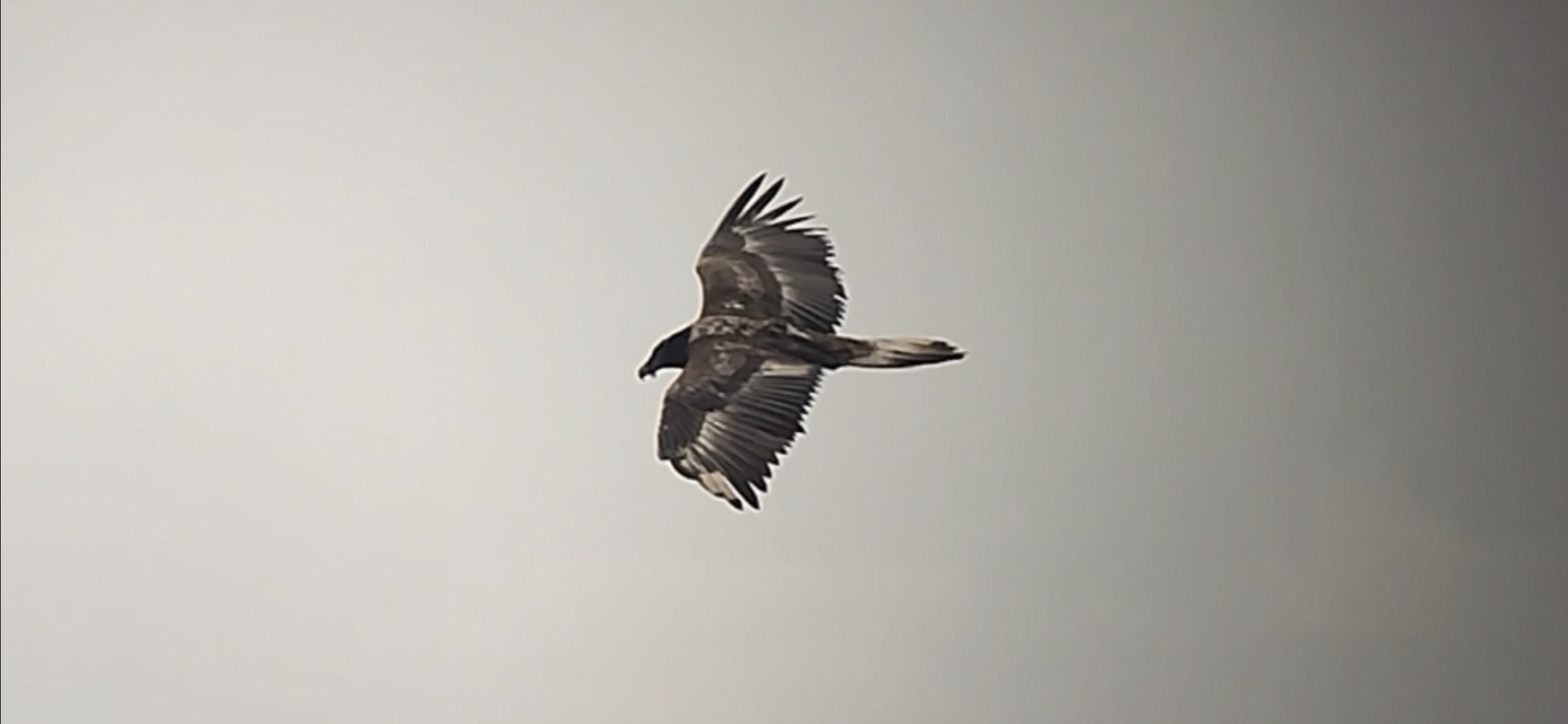
This year has once again been a great one for the Bearded Vulture reintroduction efforts in Andalusia, Spain, with a record-breaking number of chicks hatching in the Bearded Vulture Captive Breeding Centre of Guadalentín (Cazorla) and several young released into the wild.
From captivity to the wild
Captive breeding plays an essential role in οur work bringing Bearded Vultures back to regions where they disappeared. Today, the Bearded Vulture Captive Breeding Network (Bearded Vulture EEP), managed by us at the Vulture Conservation Foundation (VCF) on behalf of EAZA‘s EEP, coordinates a network of zoos, private collections and specialised centres to breed the species in captivity for conservation purposes. Every breeding season, we allocate captive-bred chicks to different projects for their eventual release into the wild across European regions to reintroduce or restock populations. This time around, the Bearded Vulture EEP designated eight young Bearded Vultures for release in Andalusia coming from different facilities — one from Liberec Zoo (Czech Republic), one from Berlin Zoo, two from Tallinn Zoo (Estonia) and three from the Bearded Vulture Captive Breeding Centre of Guadalentín, managed by us following an agreement with the Junta de Andalucía.
A special case
In addition to the seven young, one of the Bearded Vultures came from a wild nest in the Catalan Pyrenees. This individual needed help after one of its parents died, and the other one abandoned the chick. After a field team notice the situation, they mobilised a swift rescue mission to save its life. After the chick made a recovery, it travelled to Guadalentín. There, they reared it without human contact to ensure it would act as a wild bird, enabling it to return to the wild and, at the same time, contribute to the conservation of its own species!
Releasing birds to the wild
Ahead of the releases, we equip Bearded Vultures with identification rings, bleach a unique set of feathers and fit them with GPS transmitters in order to recognise them and monitor their progress in the wild. We release the young vultures using the ‘hacking method’, which is more or less the natural way of fledging. This method involves releasing nestlings that hatched in captivity at an artificial nest in suitable habitat to acclimatise to the natural environment before they take their first flights. With this technique, the nestlings can associate the place where they are released with the area of hatching so that when they reach breeding age, which is around 8-10 years old, they select these places to breed. For the first few months after the release, an attentive team closely monitors the new inhabitants and their daily progress to help ensure their wellbeing.
This year, the teams from the Andalusian Regional Ministry of Agriculture, Livestock, Fisheries and Sustainable Development (Consejería de Agricultura, Pesca y Desarrollo Rural de la Junta de Andalucía) released two of the birds in the Sierra de Castril Natural Park in Granada, while the other six in the Sierras de Cazorla, Segura y Las Villas Natural Park. The released birds were named Brinzal, Fapas, Grefa, Quercus, Depana, Adenex, Panda and SEO after Spanish conservation organisations that have contributed over the years to making Andalusia’s fauna one of the richest in Europe.
Bearded Vultures return to Andalusia
Bearded Vultures went extinct in Andalusia in 1986 mainly due to direct persecution, wildlife poisoning and human disturbance at the nesting sites. To bring them back, Junta de Andalucía, and us here at the Vulture Conservation Foundation started a reintroduction project in 1996, and the former Fundación Gypaetus was also created to manage the project. Since the first releases in 2006 and with the release of eight individuals this year, 79 Bearded Vultures have been released in Andalusia by July this year in the provinces of Jaén and Granada. Thanks to tackling threats and releasing birds, the population of the species is gradually increasing. There are currently five Bearded Vulture pairs and over 40 individuals in Andalusia.

